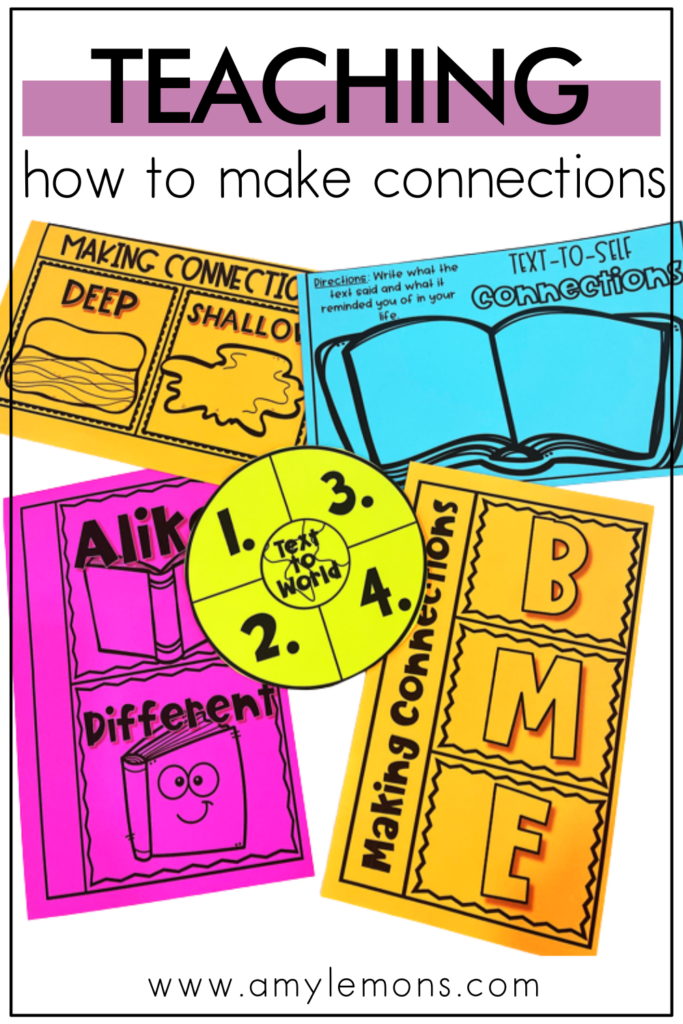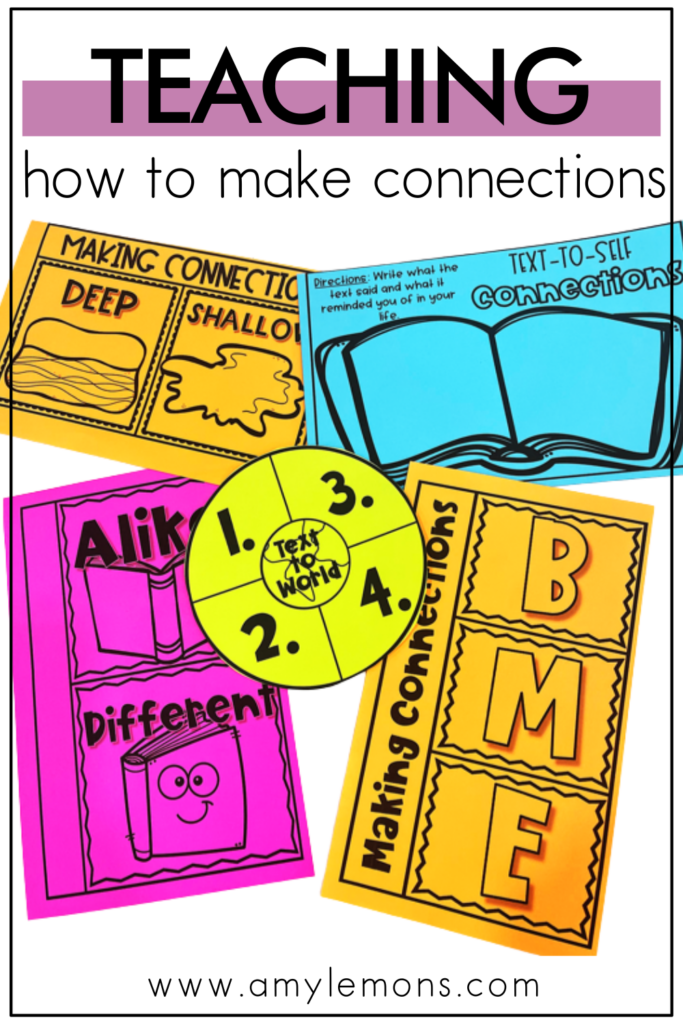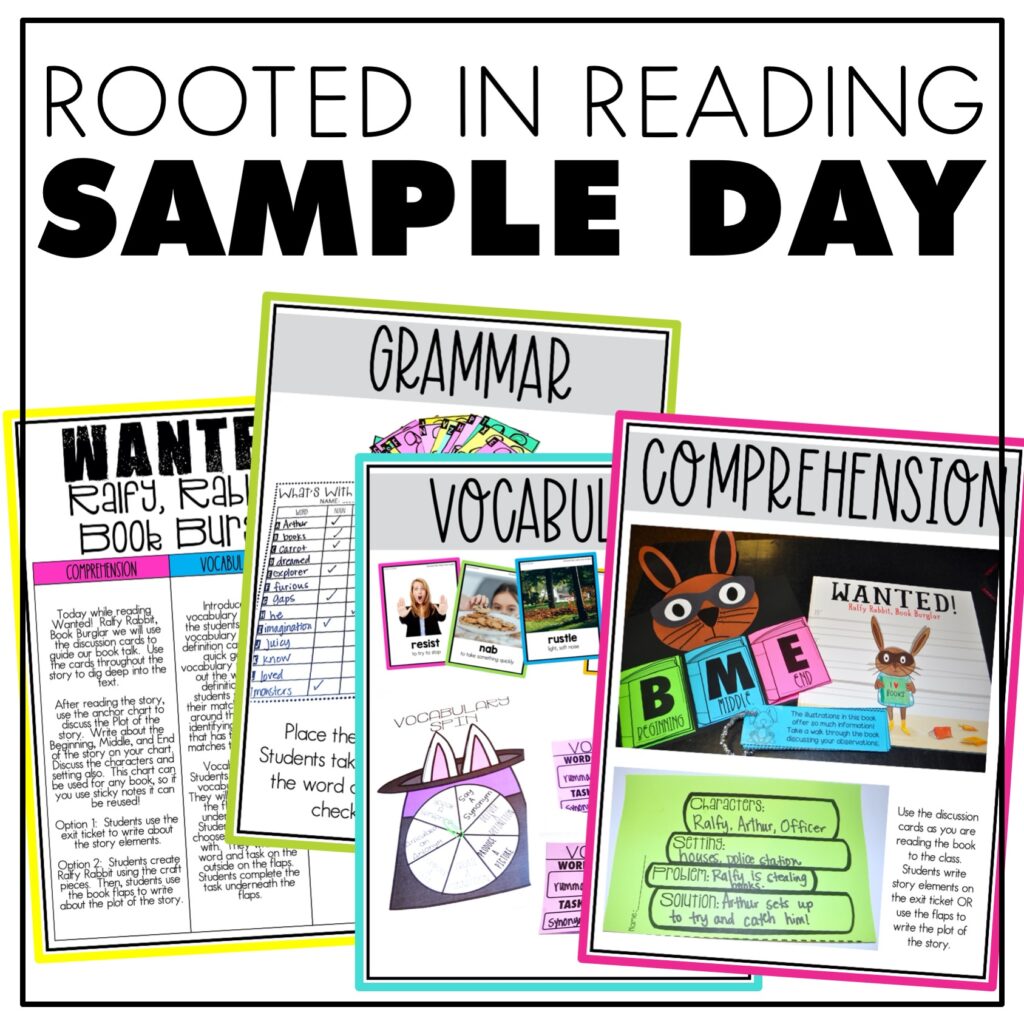

Teaching students how to make connections while reading is an invaluable skill that cultivates not only a deeper understanding of texts but also fosters a lifelong love for learning. However, figuring out how to teach making connections in reading can be tricky because students can struggle with going deeper.
Before students learn how to make connections, reading can seem like a mundane task but as they learn how to see the connections between their experiences, emotions, and other things they’ve learned along the way, reading becomes a personal journey of discovery.
I don’t mean to make this sound so magical, but it truly is! There’s nothing like seeing the moments when your students connect to something you’ve been reading in class.
But you may be asking yourself, “How do I get them to look beyond the surface of the text?”
Begin your lesson planning by incorporating activities for making connections that help students actively engage with the material, enhance comprehension and critical thinking, and bring out their curiosity.
Beyond school district requirements, we want students to be strong readers who make connections while they are reading because they are better able to comprehend and gain a deep understanding of the text — which is what we strive for.
It is an important skill because it builds upon a reader’s prior knowledge (schema) as well as their experiences in life. This allows students to connect with a text in a more meaningful way.
This means they are more engaged with the reading experience, which is a win-win for teachers and parents!
As you prepare to teach your students how to make connections, there are several features the making connections activities should incorporate:
I’ll be using our Reading Toolkit for Making Connections to demonstrate what this looks like throughout a typical introduction to the lesson.
When introducing making connections to students, you should emphasize that we make connections to the text in three different ways.
Oftentimes we are doing all three as we are reading without even knowing it! Using a chart provides a visual for introducing the different types of connections, and it can anchor the learning that will occur throughout the school year.
Working as a class, your students provide examples of each type of connection as you introduce them. This is a wonderful way to open class discussions on learned experiences.
After you introduce the three types of connections, allow students to put that new information to the test!
You can share different pre-made connections with the class and allow the students to determine which type of connection was made.
You can use a digital connections activity to work together as a class. Simply project the connections on your whiteboard and have your students use Connections Bookmarks as visual guides.
This allows students to practice making connections interactively!
You don’t want your readers to forget the very important skill of making connections. Use this Making Connections chant to give students a tool for remembering the many ways they can connect the books they’re reading to real life.
Before you release your students to independently work on making connections, doing this chant will remind them of the different types of connections they can make while reading.
Plus, it’s another great way to connect with your class as a whole!
Once you’ve taken the time to define the connections we make to reading and provide students with tools to remember and put them into practice, you’re ready to dive into picture books that are great for making connections.
The books can also open up opportunities to spiral in additional, related skills like asking questions and making predictions.
A buddy skill for making connections is allowing students to ask and answer questions and make predictions. Your students can answer questions about the text and its relation to their experiences.
They can make predictions when they think about the connections they’ve made.
One way you can do this is with the book “The Rainbow Fish”. The Rainbow Fish is a classic story adored by many for several years!
It’s a great read to use when making connections because of the messaging around being kind and generous to others. Many students can relate to not wanting to share or especially, being on the receiving end of someone who may be a bit selfish.
Students can both connect with, answer questions, and make predictions about those feelings.
Before releasing your students to be completely independent in making connections, provide structured questions like those used in the Rainbow Fish activity to get their thinking started.
Incorporating this reading comprehension skill will help them to make connections by encouraging them to think critically about what they are reading.
At the beginning of the lesson, you use your anchor chart to provide examples of making connections with your students. When you’re ready for them to act more independently, you’ll want to take it up a notch by modeling and making connections.
Choose a picture book that would lend itself to making a special connection in your life. Read it with your students and share your thoughts and connections.
For example, the book “Louder, Lili”, provides a wonderful opportunity to discuss times when you may have struggled with speaking up, or on the opposite end where you constantly took charge.
It provides a great message for kids on finding their voice but also, it’s so relatable to adults!
As you are reading whichever book speaks most to you, be sure to point out how you are connecting with the story. Then, jot those connections down on an anchor chart.
Modeling this for your students will help them understand how to make connections with a real-world example to follow!


Hey, y’all! My name is Amy Lemons and I am passionate about providing students with both engaging and effective standards-based Math and ELA lessons.

Sample a day of Rooted in Reading with these lesson plans and activities for Reading Comprehension, Vocabulary, and Grammar!


